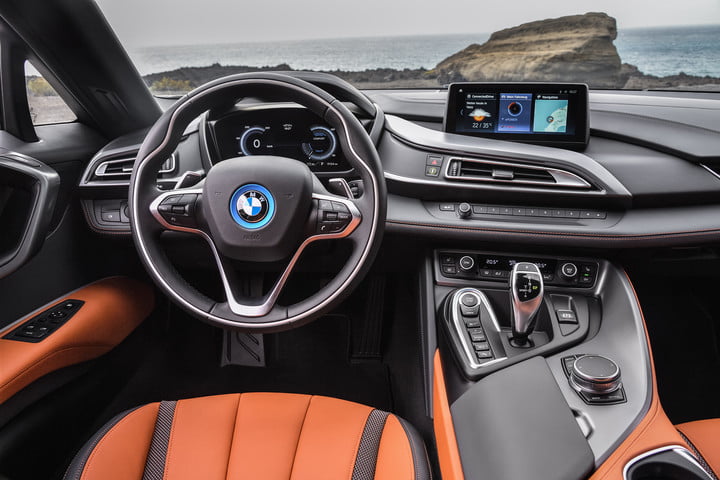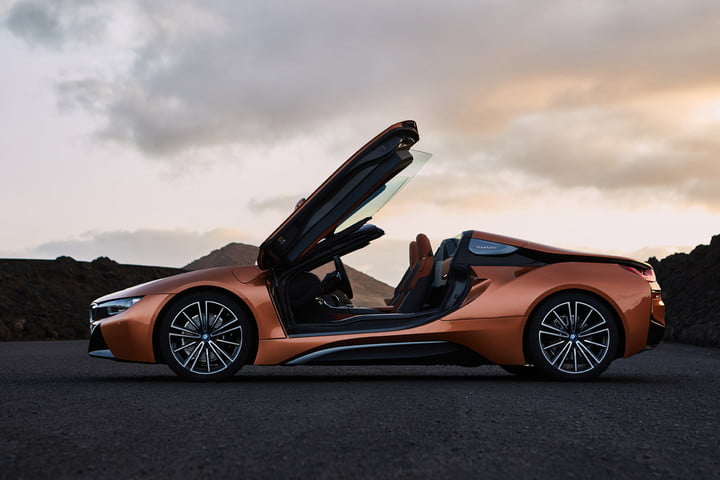How six new cars will set the course BMW’s design language will follow
/By Ronan Glon - Digital Trends
The first thing people notice about a brand-new car is what it looks like. It’s big, it’s narrow, it’s ugly, it’s boring, it’s sharp, and so on.
Looks make the difference between love at first sight or hate at first sight.
We’re taught not to judge a book by its cover but it’s nearly impossible not to make a judgement when the veil comes off. Styling is as important as what’s under the sheet metal. This holds true even with the advent of new technologies, namely electrification and autonomy, because they present daring and unexpected ways for designers to shape cars.
We sat down with Adrian van Hooydonk, the BMW Group’s design boss, to get insight on how the company’s cars will evolve in the coming years. As it turns out, executives in the board room and stylists in the design studio have given this topic at least as much thought as we have.
Digital Trends: BMW’s styling has evolved considerably since the very first 3 Series arrived in the 1970s. What’s next?
Adrian van Hooydonk - BMW Design Director
Adrian van Hooydonk: What we’re rolling out this year is going to be the next step in the BMW form language. We’re launching six new cars for the BMW brand starting with the X2. What you’ll see is the cars will still be very dynamic and elegant, we’ll still have the so-called shark nose in the front. In general, the form language will become cleaner with fewer lines. The lines that we will have will be sharper than before and more precise.
We’ll also clean things up quite a bit in the interior. You’ll see fewer switches, fewer buttons, and more digital cockpits coming from us this year. Like, I said, there will be six new cars. Some very important ones like the 8 Series, for example, and the new Z4. At the end of this year, you will have a good and complete overview of where we want to take the brand in the next generation.
Which styling cues do you always try to include when you start designing a car?
At BMW, there is actually no rule set in stone. Of course, we do have a very recognizable front end with the grille and the double round headlamps. We have a very recognizable window side graphic, and also very recognizable tail lamps.
“Even a three-year old can recognize a BMW in traffic…”
But within that, I think you see that we have developed quite a lot of variation and that’s what you’re going to see also this year as we open a new chapter in our form language. Each of the cars will be identifiable as a BMW through these elements but they will also differentiate from one another. You will be able to see in the rear-view mirror not only that it’s a BMW but also what model it is.
Even iconic elements, like the grille and the lamps. You’re going to see a lot of differentiation and interpretations of the theme from us this year.
You said you have no rules set in stone. Can you imagine a BMW without the twin-kidney grille?
No, I cannot. We looked at that, actually, when we started developing our electric range. In those vehicles, especially the i3, we don’t need the grille anymore to take air in like in our other products. So, we really looked at that, but in the end, you see the result still does have something that looks like a kidney-shaped grille because it simply makes our brand so recognizable. Even a three-year old can recognize a BMW in traffic, and there’s no amount of advertising you can do to get you that. We didn’t want to give it up.
BMW is moving towards autonomy. Does a car still need to look dynamic if it’s driving itself?
I think it should. The way we are approaching autonomous drive is that it will become a natural part of what our cars are able to do. In the next vehicle generation, you will see our cars becoming more intelligent and autonomous drive is just the highest form of that. They will one day be so intelligent that they’ll know the road and know what to do. They will only do so when the driver wants that.
In the foreseeable future, we will always offer a steering wheel and basically develop the car for people to enjoy driving it themselves. But we know full well that if you have an eight-hour drive, you don’t mind the car taking over for two or three hours because you can do other stuff. It will change the way the cars look, especially in the interior, but I don’t see any reason why a BMW shouldn’t look elegant or dynamic on the outside. Even when we think about shared mobility, we find that people do want to know what kind of car they’re going to use. They do care about looks.
Part of what stands out to the i3 are the natural materials BMW uses to build the interior. Will we see similar materials on upcoming i-badged models?
“We see [the i brand] as an incubator for all things new, not just electric mobility.”
With the i3, we pushed the border quite far in terms of energy efficiency in design and also sustainability in design. The materials you’re talking about are part of that. We wanted to know exactly how all these materials were made, how they can be recycled, and we wanted to really take new roads in how you portray luxury in the i3. Our leather is colored in a sustainable way. The door panels are made out of dried and pressed grass, which grows very fast. We came to these ideas by analyzing how cars are built today and by sometimes leaving two layers off. Of course, it took us a long time to develop everything and make it production-ready. It’s an aspect I like a lot, too.
It shows how the BMW group sees the i brand. We see it as an incubator for all things new, not just electric mobility.
One of the models you’re preparing to launch is the X7. Was it difficult to apply BMW’s design language to such a big vehicle?
No, that’s what we really like to do. Extending the range is less difficult than doing a successor because you can really add something new to the brand.
When you do develop a successor, what’s the most challenging part of jumping from one generation to the next?
For us, doing a new car is always an opportunity to push for more modernity in the brand. BMW, of course, has a 100-year long history and tradition. If you go back you’ll see that, over time, the look and feel of the brand has changed quite a lot but the essence, what the brand stands for, has been kept. That’s our approach. And, then you see that during our history we changed the design on an almost decade-by-decade basis. Change has picked up speed now, I would say. At the moment we consider each new car a very good opportunity to modernize the brand and to add something new to it. The result will be a bigger spread in the model line-up in terms of look and appearance.
Broadly speaking, what will a 3 Series look like in 100 years?
We’ve asked ourselves that question. We feel that, for our customers, the next 100 years are going to be more interesting than the last 100 years. You source a certain authenticity from the past so people know what BMW stands for. Things like engineering and driving dynamics.
To answer your question: it’s hard to predict. When we thought about this question, we said “let’s try to think three vehicle generations out.” We came up with the Vision Next 100 concept. That was our idea of the 3 Series of the future. It’s a car that drives electrically, it’s highly aerodynamic, of course it can drive autonomously, the interior was completely clean. We didn’t have switches or even a computer screen; the whole windshield doubled as the screen. The steering wheel was still there, but it could fold back if you pushed the BMW logo. That’s our vision, where we think the BMW brand could go. The car is still elegant, sexy, and dynamic.




